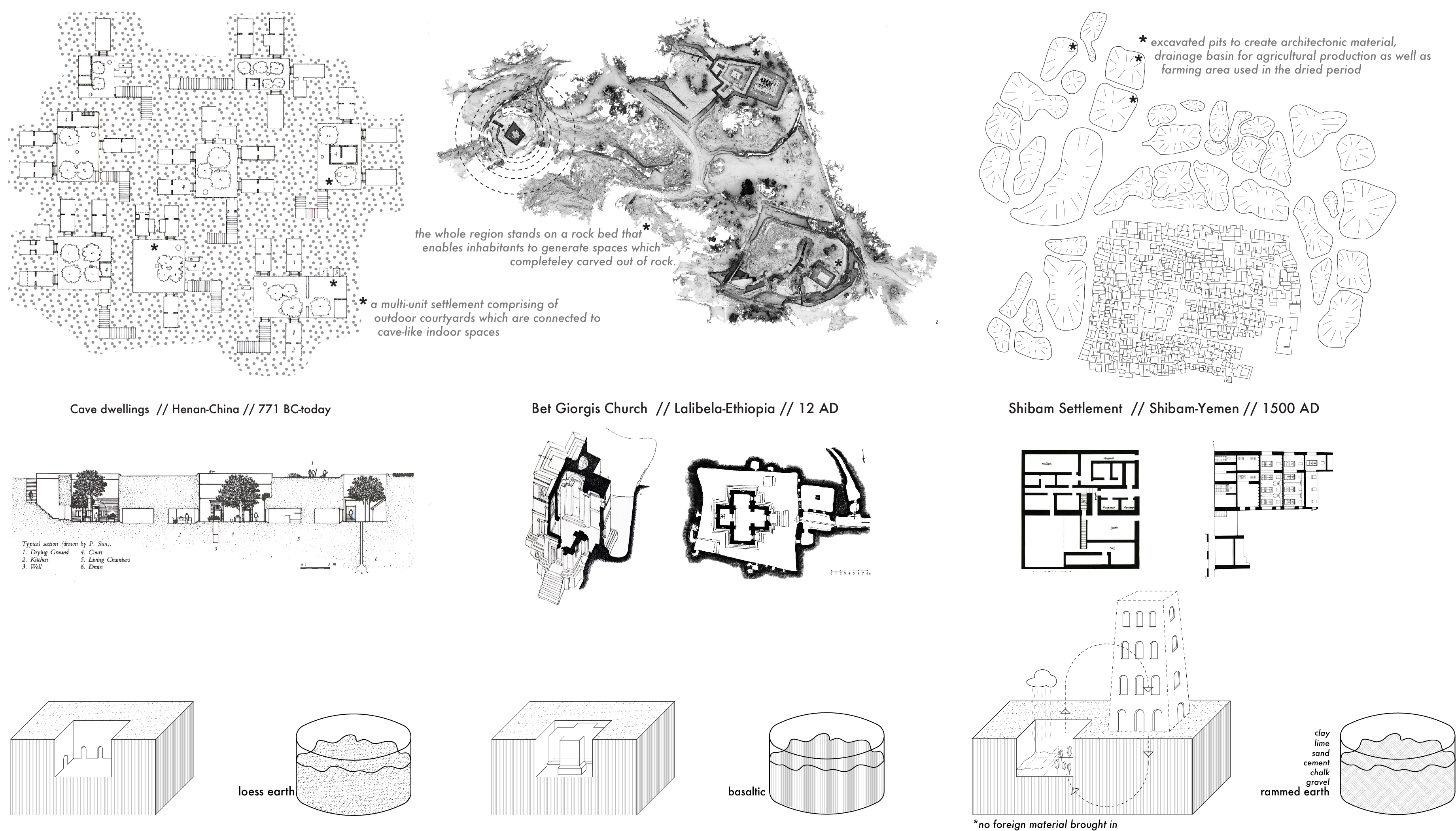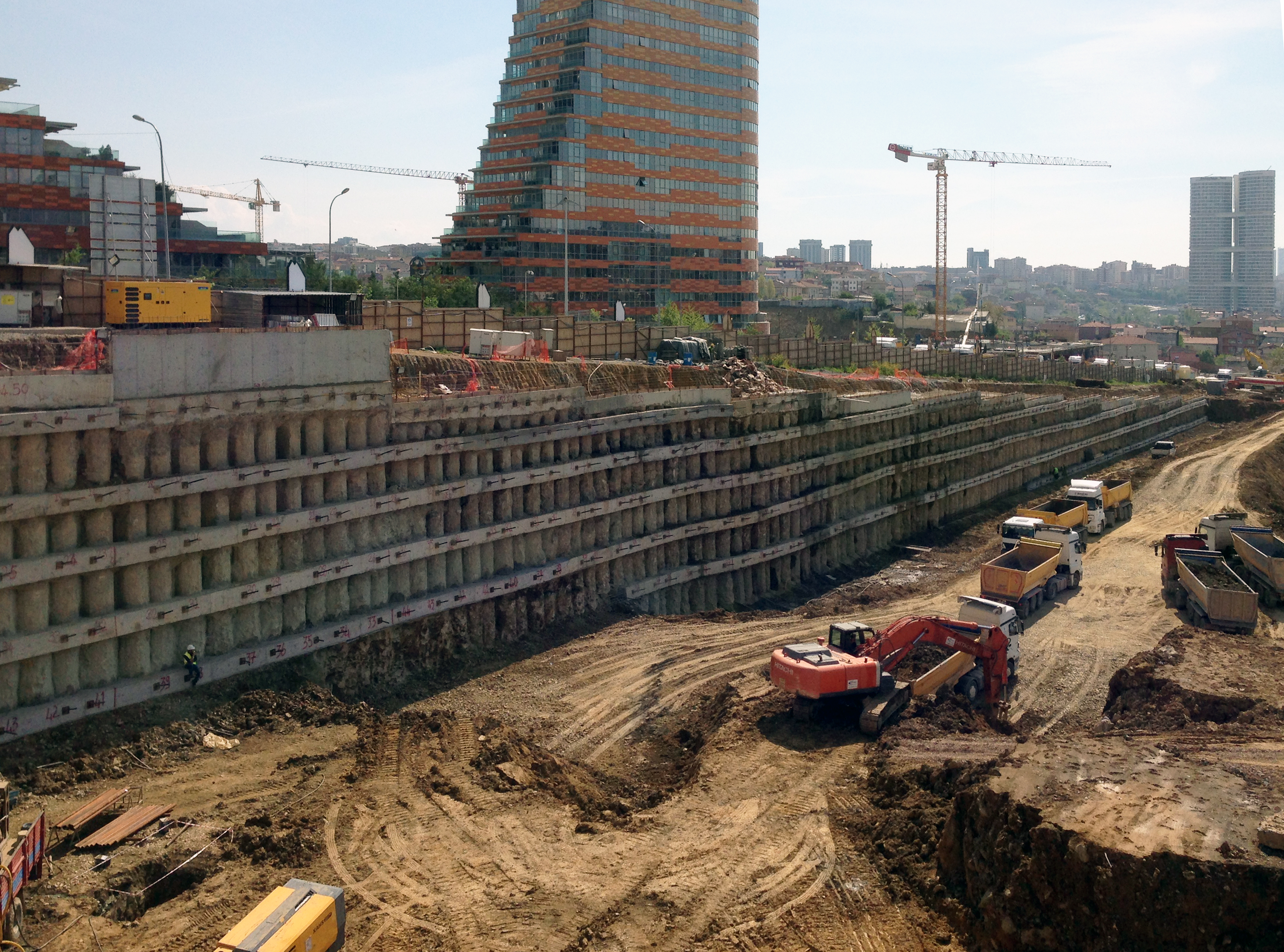Rammed Earth in Action [2019]
/// Re-thinking of urban transformation within the frame of architectural material and space generation bearing in mind earthquake-safety necessities of the city
Brief: An alternative way of material and space generation using the earth excavated from construction sites across the city
Location: Istanbul / Turkey
Sort: Diploma project / Hochschule Anhalt, Dessau International Architecture Master Program (DIA)
Supervisor: Sebastian Felix Ernst (MSc Arch.) & Leander Bulst [David Chipperfield Architects]
![]()
#rammedearth #reuse #urbantransformation #closecircuitsinmaterialandspacegeneration
The project site has been declared as one of so-called urban transformation spots in Istanbul, meaning that building stock is going to be demolished and be replaced with earthquake-safe ones. In the process of execution of plan, a remarkable amount of projects realised so far has endep up either pushing prices up in real estate market and has caused gentrification or created an environment in which former users couldn’t fit because it is designed by neglecting the existing social-cultural habits of former users. Another widely-done mistake is to propose copy-paste solutions which is not tailored enough for the sites applied.
With those facts before the transformation starts, the project offers to step back in order to think broader within material oriented research frame of the design studio. In that sense, it offers to use the earth as architectural material which is taken out from construction sites around the city, which is regarded as garbage and has to be transported somewhere out of city. Herewith, a space generation process enables / tiggers another space generation process by generating the material. Other than that, the proposal offers to analyse the existing situation of site in terms of space usage, dealing with the topography and it aims not only to be tailored enough specifically for the site but also to be adjustable for the other posbbie transformation projects spread across the city.
In the process of research and desing following questions led the project:
*Where does the architectural material come from?
* Where is it used afterwards?
* Is there a connection between those two processes?
* If there is, is it trackable and what kind of outcome could be obtained out of those processes?
* Could act of making material become also act of making architecture at the same time?
* Could material and space generation processes be directly associated instead of being irrelevant or vice versa?
* Could a process of space generation even trigger another space generation process by creating an output material during its own space generation process, which can be used as construction material for other space generations?
Today most of the raw material used for construction locates in underground deposits and it requires some certain processes from taking out to the moment when the raw material becomes ready to be used. Throughout history, this process is closely related to technology developed. In the very early times of humanity, humankind settled within their own technological development paces in cave-like shelters and transformed them into houses as much as they could. In this case, architectural material is already there and material-space relationship is expectedly traceable. However, the more humankind technologically develops the less material-space relationship gets blurred and untraceable. Today, it is pretty likely and normal to see flying vehicles generated by materials originally coming from far depths of underground sources or buildings over 400 m heights constructed with metals sourced from depths of underground deposits. In the light of these points, the research aims to define and reset the so-called material-space generation relationship where the origin of material is still traceable in space generated so that it provides a close circuit.
To achive this, the research seeks of case studies where this relationship is still traceable within the notion of close circuit and collects the knowledge of architectural material used like loess earth, volcanic tuff, rammed earth, granite, rock salt. In relation to case studies, it summarises methods which are used to generate spaces: subtraction on the ground and subtraction under the ground.
With the help of knowledge extrated through research, it develops the proposal on the project site in Istanbul. Decision of using the earth outsourced from construction sites across the city in compressed form enables also a high thermal quality and earthquake-safety in addition to compability in the research frame.




















